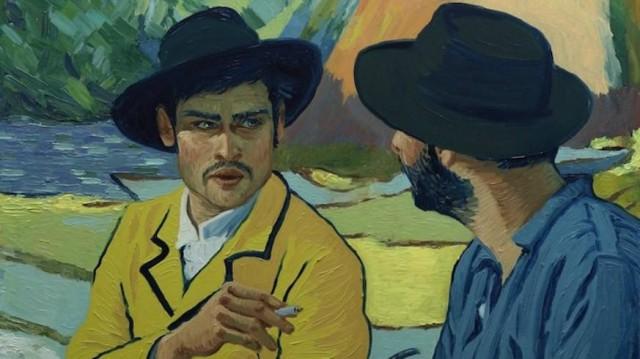‘Loving Vincent’ throws reality of suicide into stark relief
Anyone who knows the story of Vincent van Gogh knows that "Loving Vincent" couldn't be anything but miserable.
But what was unexpected was the way it was so difficult to shake off.
The world's first fully painted film attempts to delve into the great artist's mind by focusing on the aftermath of his death.
There are many good things to be said about Dorota Kobiela and Hugh Welchman's "Loving Vincent." As expected, the film was visually compelling. The fact that 125 painters created 65,000 beautiful oil paintings to bring to life van Gogh's story was enough to draw eyes on the screen.
But it was the mysterious way the film portrayed the events leading up to and following van Gogh's suicide that made it impossible to look away. The unique and beautiful storytelling did not hide the dark realities hinted at the film, nor did it distract from its melancholic mood.

Set in the year after van Gogh's death in 1891 Paris, the film follows the journey of Armand Roulin, who was tasked to deliver a letter from van Gogh to his brother Theo. Upon learning that Theo was dead as well, Roulin set out to see van Gogh's doctor at the end, Dr. Gatchet. He traveled to Auvers, Paris, where van Gogh lived and died.
Roulin was clear in the beginning that he did not much care for van Gogh, but was undeniably drawn to his death. He found himself speaking to the townspeople about the artist, and it was their narratives that directed the storytelling of the film.
It was also their questions that made the film worth watching.
"Do you know why?"
"How does a man go from calm to suicidal in six weeks?"
"Everything seemed fine with him, something must have happened so suddenly."
More than its stunning animation, the most important thing "Loving Vincent" achieved was reflecting how suicide can be such a difficult concept to grasp.
They said van Gogh seemed happy. Everything seemed alright with him. The day he took his own life, he had been laughing around and drinking with some young men. He supposedly placed an order on tons of paint, and isn't that odd?
Roulin in particular perfectly conveyed the struggle for acceptance. He went from derisive to curious to invested in van Gogh's death, relentlessly searching for reason and motive.
He grasped at the possibility that van Gogh didn't commit suicide, but instead was shot — after all, who shoots himself in the stomach? Van Gogh died two days after inflicting the wound. Roulin wondered, did he want to live after all?
It was a beautiful portrayal of the thoughts that haunt us and the questions that will never be answered.
In present time, van Gogh is a celebrated painter — the epitome of a tortured artist.
In the film, van Gogh was shrouded in shadow and mystery but at the same time sitting in plain sight — painting in the fields, painting at the river, drinking in town.
People saw him, people knew him. Some thought he was a madman, while some believed him to be a genius. Either way he impossible to ignore, especially in a small town, which makes the death all the more shocking.
Everyone in the town had something to say about him. The pieces of memories, the different perspectives of what happened and why it happened drove the story and attempted to give viewers a deeper understanding of Van Gogh's tortured life, depression, and suicide.
In the end, there was no real answer, no real reason that would have justified it.
But in the end, Roulin was able to give the most accurate description of van Gogh, and anyone who ever suffered a similar battle.
Someone who tried his best, every day. — AT, GMA News
"Loving Vincent" is the opening film of the QCinema International Film Festival. It will be screened on October 23 in UP Town Center and October 24 in Gateway.




